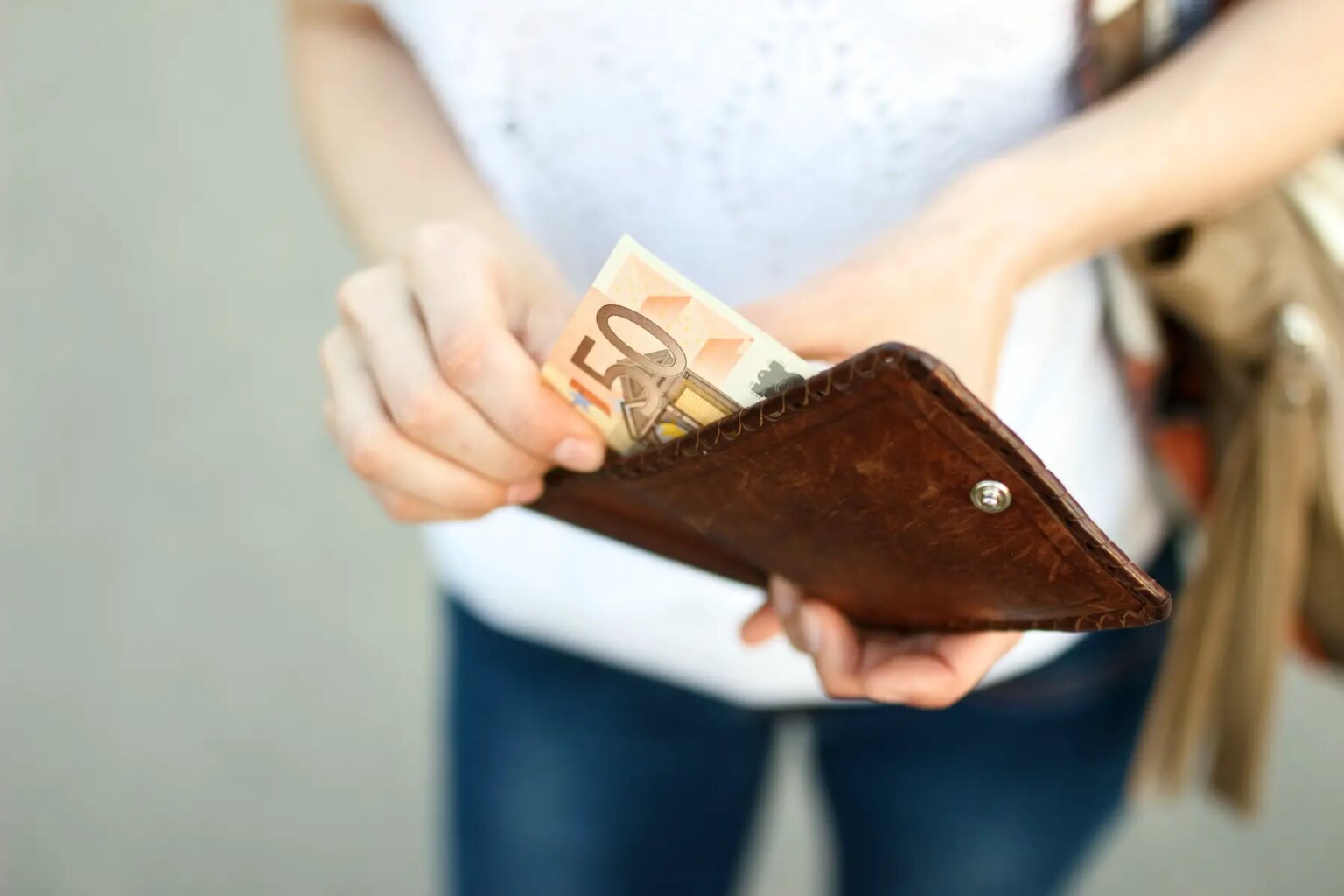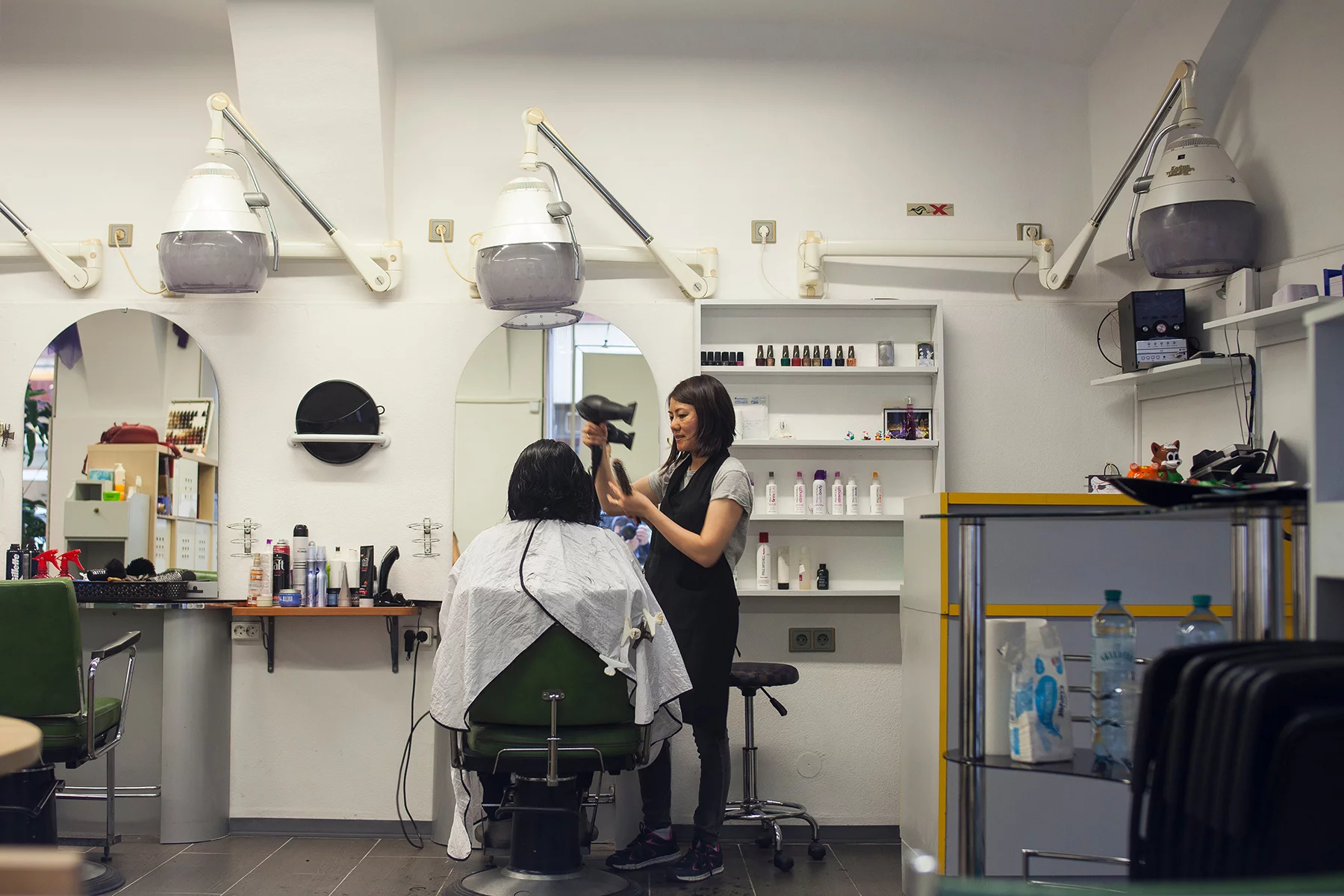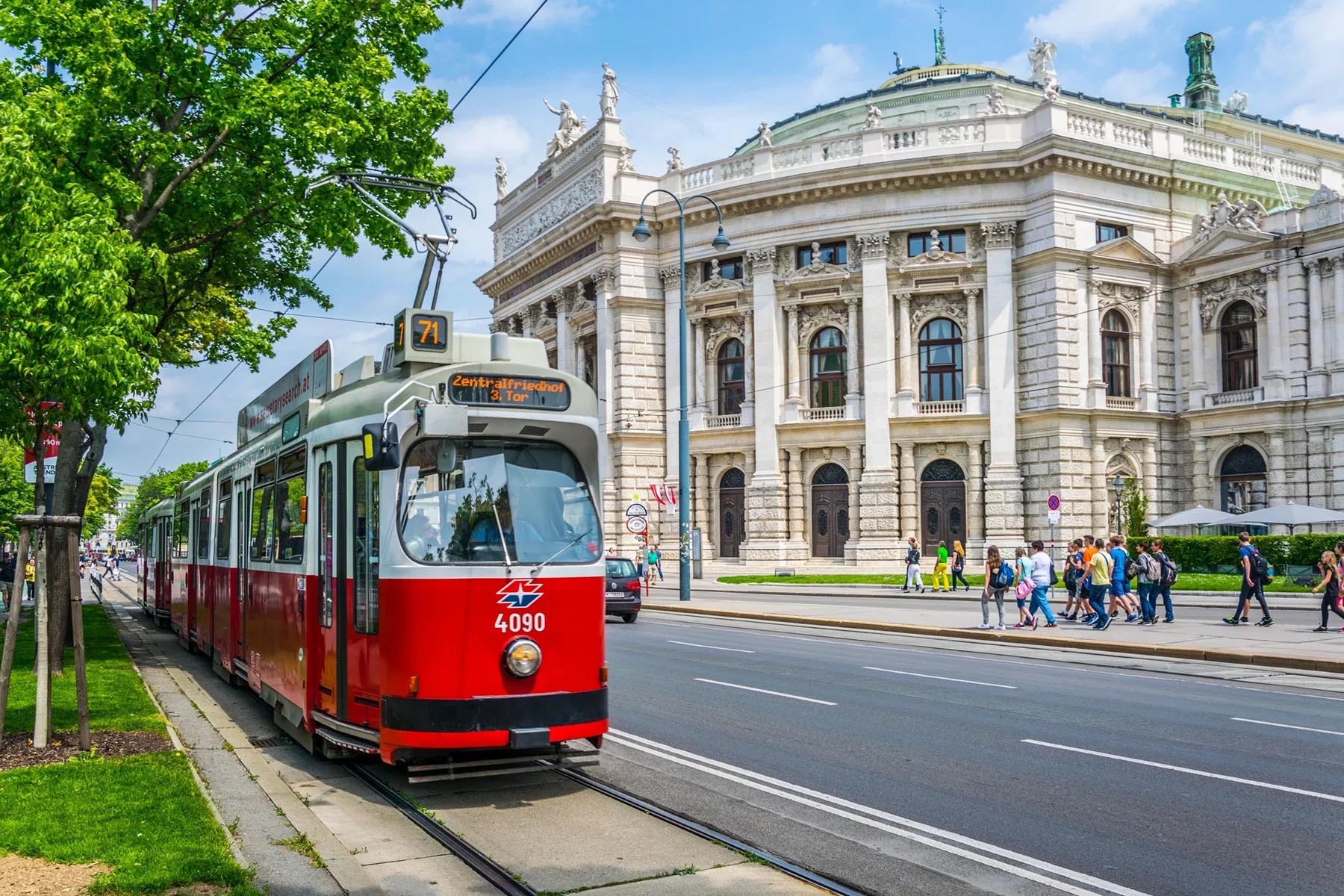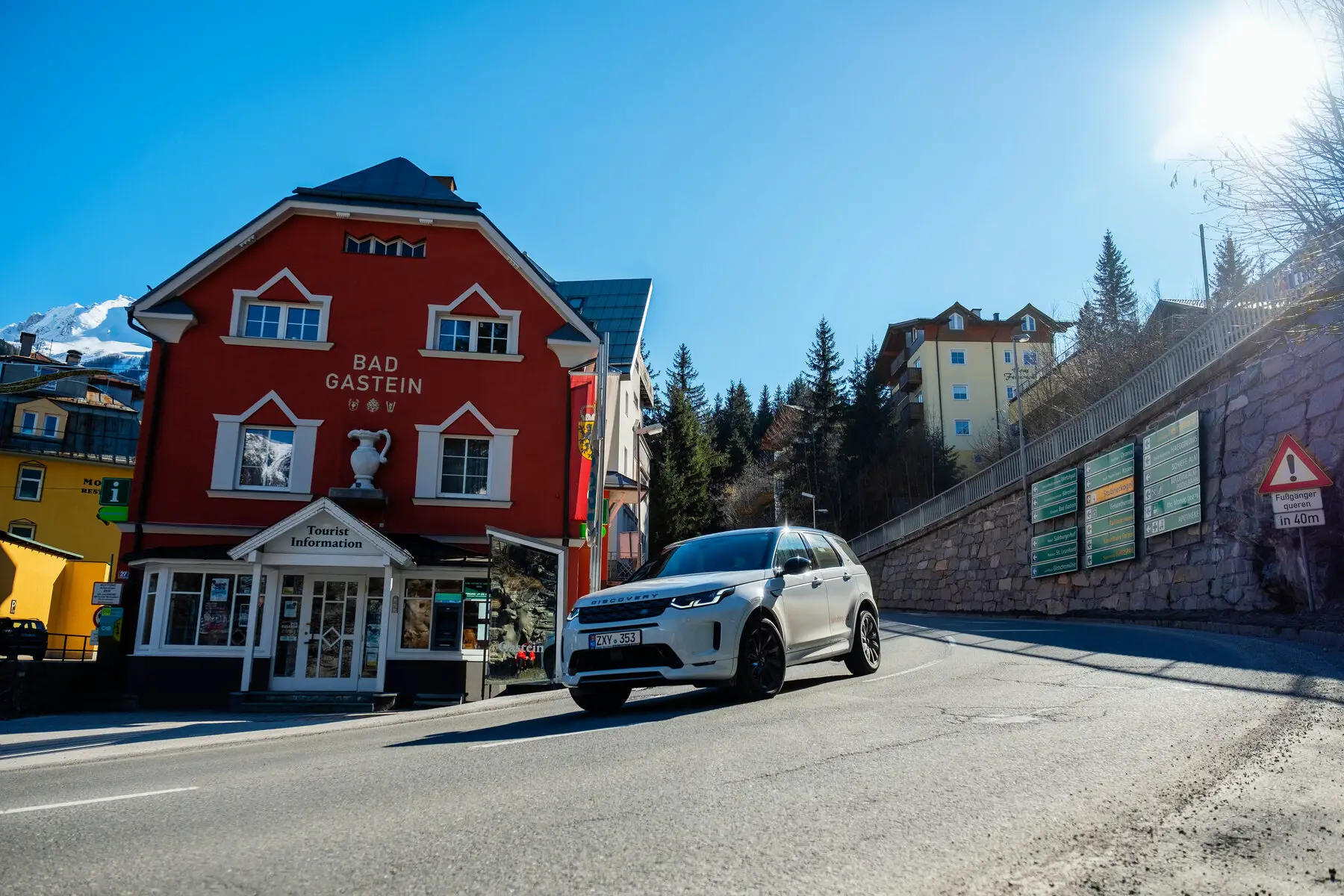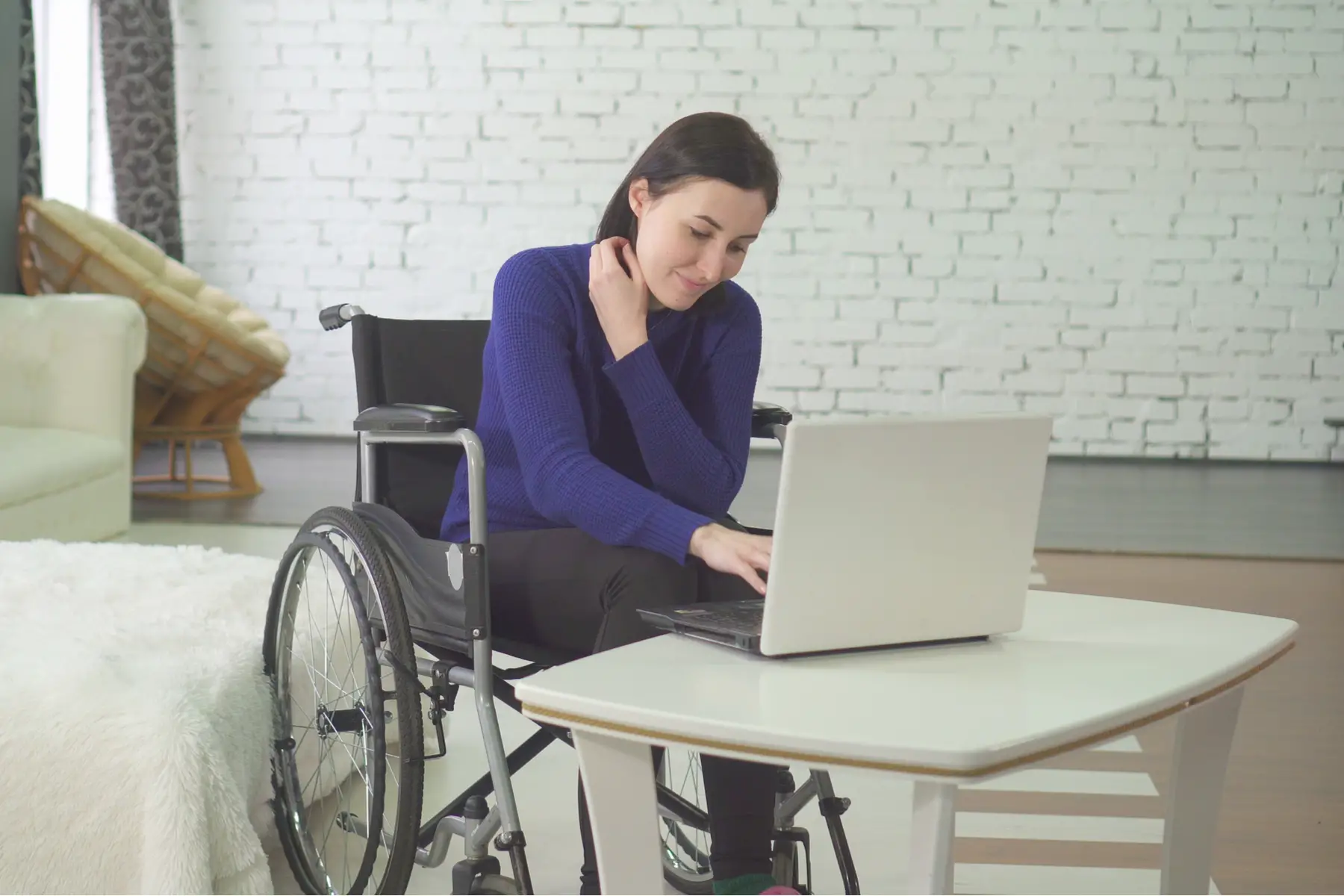Balancing your budget is important, no matter what country you call home. Therefore, it pays to do a little research on the short- and long-term costs associated with living abroad. And while the crisp mountain air, high culture, and stunning vista of Austria appeal to expats, it’s also worth staying informed about the price of practical things such as rent and electricity bills.
To give you an idea of the cost of living in Austria, this article covers the following:
Is Austria’s economy good?
Austria has a highly developed economy, with the 13th-highest GDP per capita in the world. According to the World Bank (2023 figures), the services sector is the largest part of the economy, comprising over 63% of GDP.
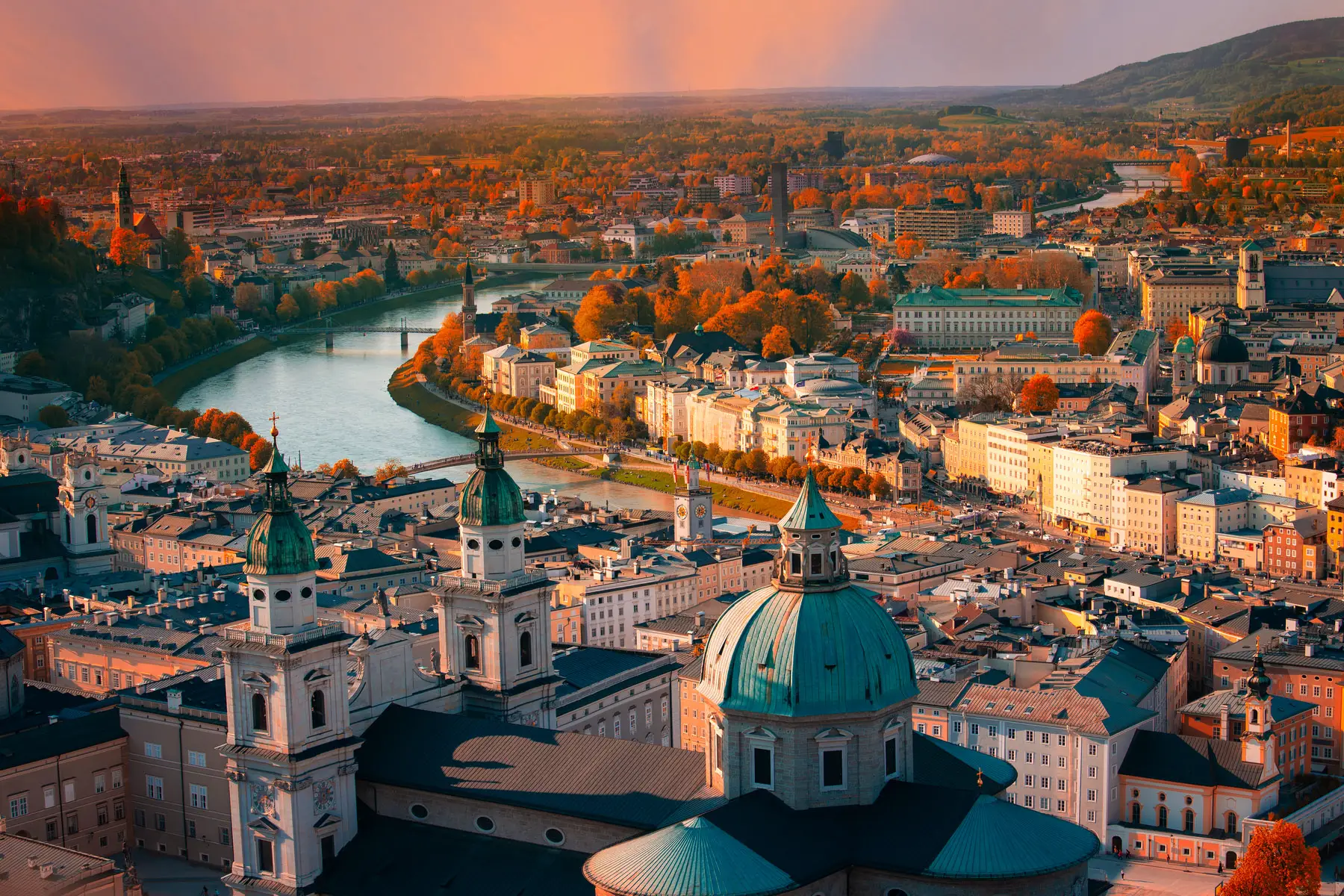
However, despite its strengths, the Austrian economy has been in recession since 2023. Regional economic disparities also exist, with GDP per capita ranging from €36,500 in Burgenland to nearly €60,000 in Vienna.
Inflation and disposable income in Austria
Like other European countries, Austria has experienced high inflation in recent years. Inflation reached 7.8% in 2023, dropping to 2.9% in 2024. In 2025, it is expected to reach 2.1%, which will bring it under the European Union (EU) average of 2.4%.
Although Austria’s GDP per capita is €37,860, the average yearly disposable income is slightly lower – €31,443. Both are well above the EU average.
However, the country’s relatively high incomes do not tell the whole story. Austria reports that 17.7% of the population is at risk of poverty or social exclusion, a figure that has increased in recent years. About 3.7% of people already experience severe material and social deprivation.
Find out more about minimum wage and average income in Austria in our dedicated article.
Austria compared to its neighbors
Situated in the center of Europe, Austria is a mid-sized European economy that borders eight countries. These include economic leaders such as Germany, the country’s main trading partner, and Italy. It also borders the evolving markets of Hungary and Slovakia.
Austria’s EU membership and geographical position give it a strategic advantage for trade with western, central, and eastern Europe. Furthermore, its robust social welfare system helps to maintain a high standard of living. Its position as a center for international organizations, such as the OSCE, and proximity to key EU institutions make it an important regional hub.
Austria’s main exports are automobiles and components, machinery, and paper products.
The cost of living in Austria in 2025
The latest government data suggests that the average monthly household expenditure was €3,250 in 2019/20 (equivalent to €2,160 per adult).
Austria’s household budget survey only comes out every five years, but Statista forecasts total consumer spending to reach €262.7 billion in 2025. Divided by capita, this amounts to about €2,402 in monthly spending.
The price of groceries in Austria in 2025
Food and drink
Unfortunately, buying groceries in Austria is more expensive than in many other countries. This is especially true of fresh fruits and vegetables in the winter, which are scarce and pricey. That said, there are many different supermarkets, some of which offer lower prices, so be sure to shop around for your favorite grocery store.
To give you an idea of grocery costs, here are some average prices for common goods*:
| Product | Price range | Product | Price range |
| Apples (1 kilo) | €2.00–€3.50 | Water (1 liter) | €0.45–2.20 |
| Bread (1 loaf) | €1.20–5.00 | Regular milk (1 liter) | €1–1.90 |
| Cheese (1 kilo) | €8.00–30.00 | Rice (1 kilo) | €1.20–7.00 |
| Coffee (from supermarket, 500g) | €4.00–15.00 | Tea (box of 20 teabags) | €1.60–4.50 |
| Eggs (6) | €2.10–4.20 | Tomatoes (1 kilo) | €2.80–5.00 |
| Orange juice (1 liter) | €2.30–4.00 |
Beer, wine, and liquor
While the cost of alcohol in Austria is on the high side for Europe, it is very affordable compared to North America. A serving of beer or wine in a restaurant, for example, may cost you anywhere between €3 and €8 depending on the establishment. Meanwhile, a pack of (multiple) beers from the local supermarket will cost you €4 to €8. A reasonably nice bottle of wine would cost around €8 to €12 in a supermarket.
Liquor is comparatively priced with other countries, with a cocktail costing anywhere between €10 and €15 in a restaurant. Strong liquor in a store can vary in price – for a 0.7-liter bottle, you can expect to pay around €6 for store-brand vodka and up to €70 for a vintage single malt whisky.
Hygiene and household products
Most people like to keep themselves and their homes clean. With that in mind, here’s what you’re likely to spend in Austria on hygiene and household products in 2025*:
| Product* | Price range | Product | Price range |
| All-purpose cleaner (1 liter) | €2.10–10.80 | Shampoo (1 liter) | €1.50–10.00 |
| Deodorant (150 ml) | €1.30–7.30 | Soap (per 100 ml) | €0.20–2.00 |
| Dish soap (1 liter) | €1.50–5.30 | Tampons (per tampon) | €0.02–0.16 |
| Garbage bags (per roll) | €1.00–6.80 | Toilet paper (per roll) | €0.30–1.00 |
| Laundry detergent (per wash) | €0.10–0.50 | Toothpaste (75 ml) | €1.40–10.00 |
2025 housing costs in Austria
According to Statista, per capita consumer spending on housing is expected to reach around €691 per month in Austria in 2025. However, prices vary depending on whether you rent or buy your accommodation and where you live in the country.
Rental costs in Austria
The average monthly rent was €658.50, or €9.90 per square meter in the third quarter of 2024. Rental prices vary across Austria’s different regions:
| Province | Average rent including running costs (2023) | Average rent per square meter (2023) |
| Burgenland | €541.50 | €7.20 |
| Carinthia | €497.70 | €7.30 |
| Lower Austria | €597.30 | €8.40 |
| Upper Austria | €580.70 | €8.60 |
| Salzburg | €713.30 | €11.30 |
| Styria | €570.50 | €8.90 |
| Tyrol | €709.60 | €10.90 |
| Vorarlberg | €717.40 | €10.70 |
| Vienna | €649.80 | €9.80 |
The good news is that due to the Austrian government‘s commitment to social and affordable housing, most people spend less of their monthly income on rent than in many other countries. For more in-depth information, read our articles on renting in Austria and where to live in Austria.
Property prices in Austria
Property prices in Austria range significantly depending on location, size, amenities, and more. In Vienna alone, the average property price is €6,953 per square meter, but it can reach up to €19,900 for those who want to live in the First District – or Innere Stadt.
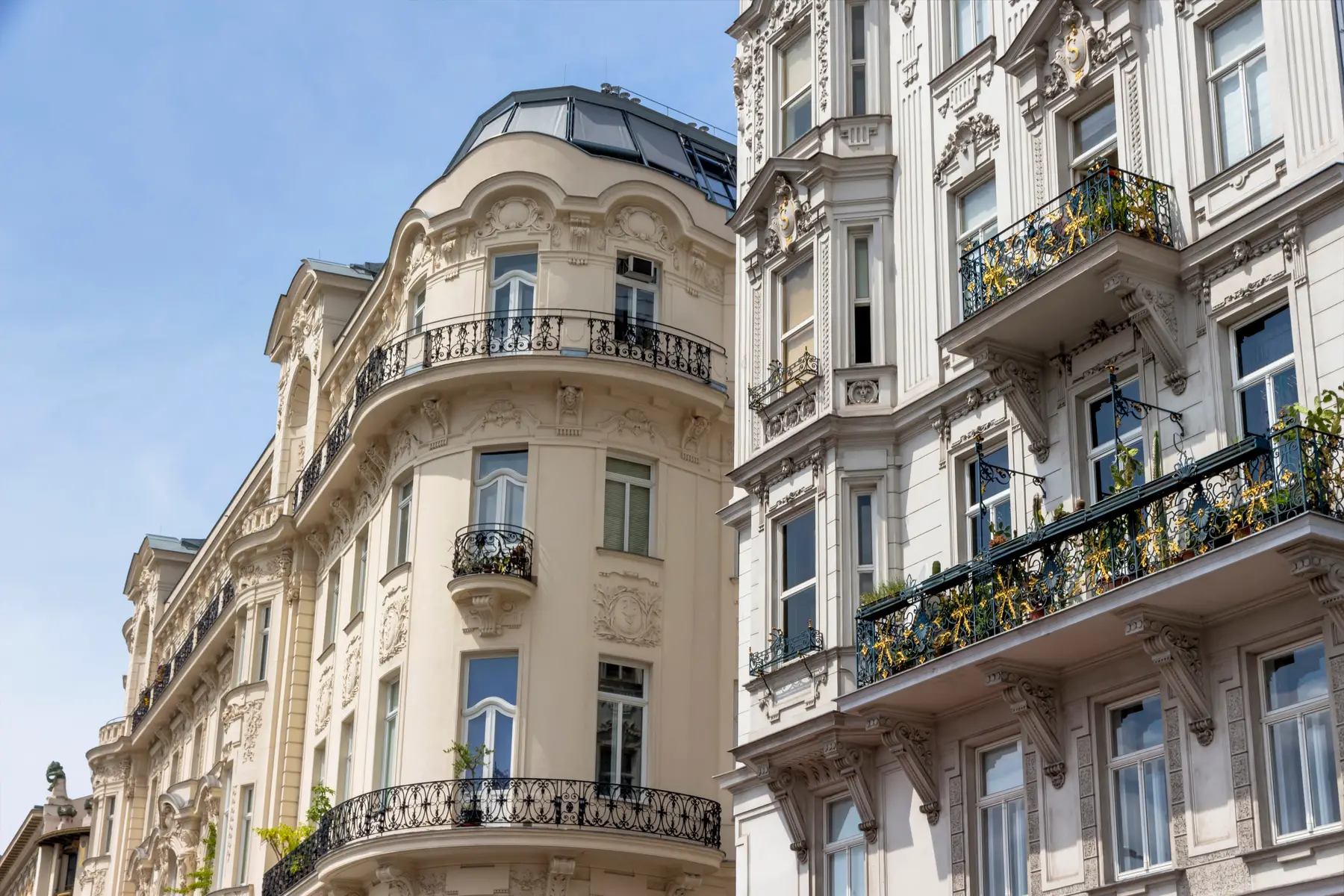
For more information, you can read our article about buying real estate in Austria.
Utility bills: water, gas, and electricity
Utility bills in Austria vary depending on what kind of unit you live in – a house or an apartment – as well as its size and any special amenities. If you bundle your utilities, such as electricity and gas, some providers will give you a discount.
On the whole, though, according to Numbeo’s crowdsourced data, most households pay between €212.50 and €500. You can read more about this in our article on setting up utilities in Austria.
The cost of Austrian healthcare
Fortunately for expats, healthcare in Austria is universal, affordable, and accessible. Most people have public healthcare, which is funded by monthly contributions by employees and employers. With this monthly payment, you gain access to preventative treatment, acute care, subsidized medication, and much more.

In 2025, the employee pays 3.87% of their income towards health insurance, while employers pay 3.78%. The maximum total contribution is €493.43 (€249.62 for the employee, €243.81 for the employer).
That said, some people also take out private health insurance, either to complement or replace public insurance. Private insurance gives you access to shorter wait times, more luxurious hospital accommodation, and a broader list of specialists.
Private health insurance can be costly, however, with some private insurance companies charging several hundred euros a month. Of course, it is important to shop around and make sure you find the right policy to meet your individual needs.
Internet and telecoms prices in Austria
Telecommunications in Austria are extensive, high-quality, and competitive. Therefore, you will likely be able to find good internet, television, and landline deals. Bundling one or more of these services will often get you an even better deal, so be sure to do your research.

Getting a phone and/or SIM card is also straightforward; you can even sign up for pay-as-you-go plans at the airport. Getting a recurring phone plan, however, may require you to already have an Austrian bank account.
According to research by Cable.co.uk, Austria’s broadband costs, on average, €30.53 per month, with the cheapest packages coming in at just under €8.00 per month.
Clothing and footwear
If you are looking to update your wardrobe, you will probably notice that the price of clothes and shoes in Austria is a bit higher than in other countries. Statista forecasts per capita monthly spending on clothes and footwear to reach around €107 in 2025.
A pair of jeans can cost you between €50–€120, depending on the store and style, while a pair of running shoes can cost around €90. And if you are looking to buy designer or brand-name items, you can expect to spend several hundred euros.
Transportation costs in Austria
Austrian public transport is highly efficient. Expect to pay the following for short trips on buses and trams within the country:
- Vienna – Single ticket: €2.40
- Graz – One-hour ticket: €3.10
- Linz – One-hour ticket: €3.00
- Salzburg – One-hour ticket: €2.50
- Innsbruck – Single ticket: €1.90
Of course, you’ll pay more for journeys between cities. Ticket prices on Austrian railways (Östereichische Bundesbahnen – ÖBB) depend on the journey and vary according to:
- How far in advance you book
- The flexibility of the ticket
- When you travel
- Which class you travel in
- Whether you reserve a seat
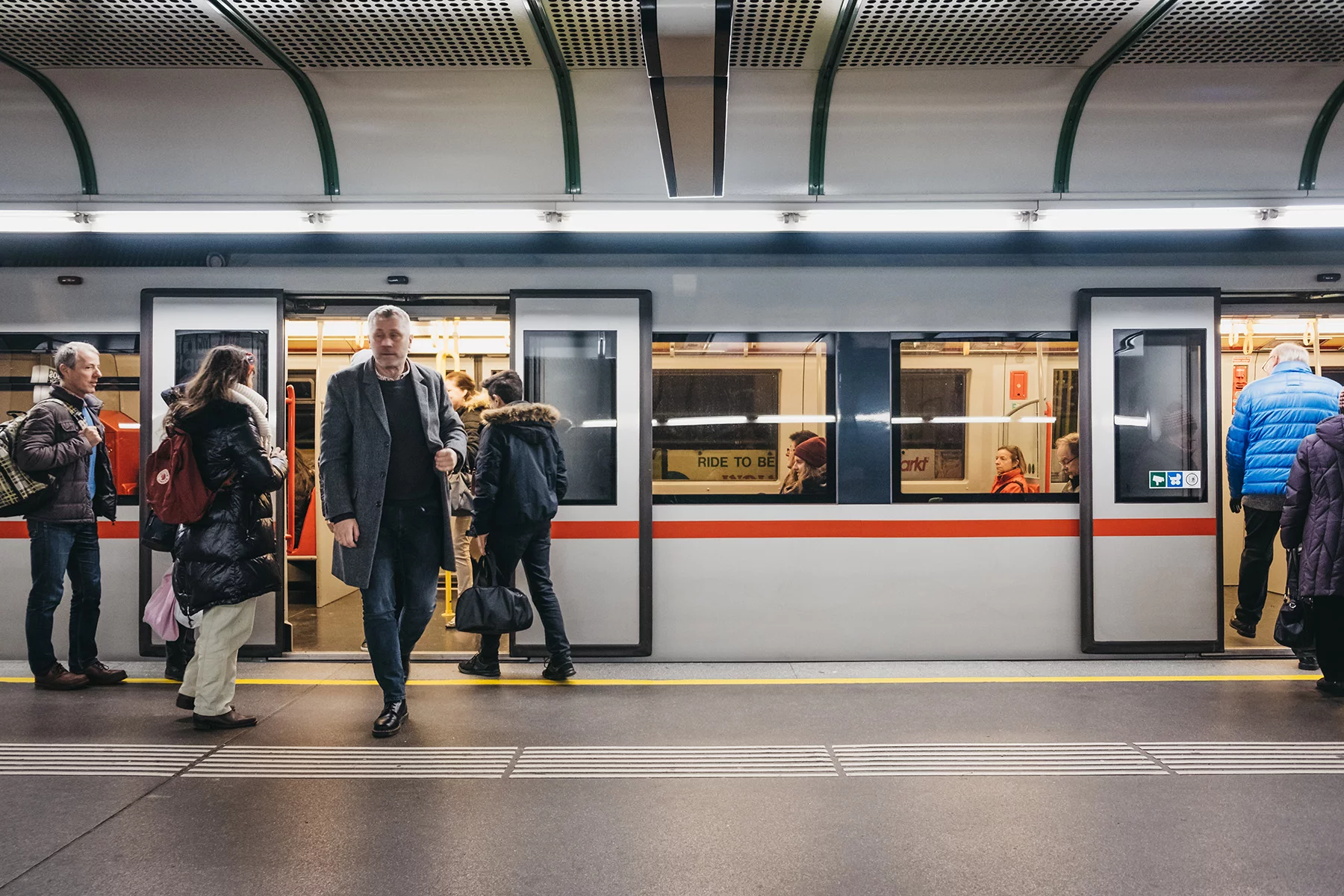
For example, a Sparschiene (discount) ticket from Vienna to Graz on a Wednesday morning costs €9.90 when booked in advance. On the other hand, a ticket booked on the day of travel with first and business class upgrades costs €98.10.
Fortunately, monthly and yearly public transit cards make regular travel quite affordable.
Driving and vehicle costs
If you want to drive yourself around, keep in mind that gasoline costs around €1.60 per liter. The costs of buying a new car in Austria will vary, but you can expect to pay around €25,000 for a small to a mid-sized car. For more information, check out our article on buying a car in Austria.
As well as the car and fuel, you must also budget for:
- Car insurance – depends on your vehicle, age, and driving history, but can range from a few hundred to a few thousand euros per year.
- Vehicle tax – €1.55 per month per ton for vehicles up to 12 tonnes.
- Vehicle registration – €207 for cars and trucks
- Maintenance and inspections
- Vignette – a toll sticker that costs €103.80 annually.
How much do leisure activities cost in Austria?
Cinemas, theater, and opera
A ticket to the movies costs around €12 in Austria.
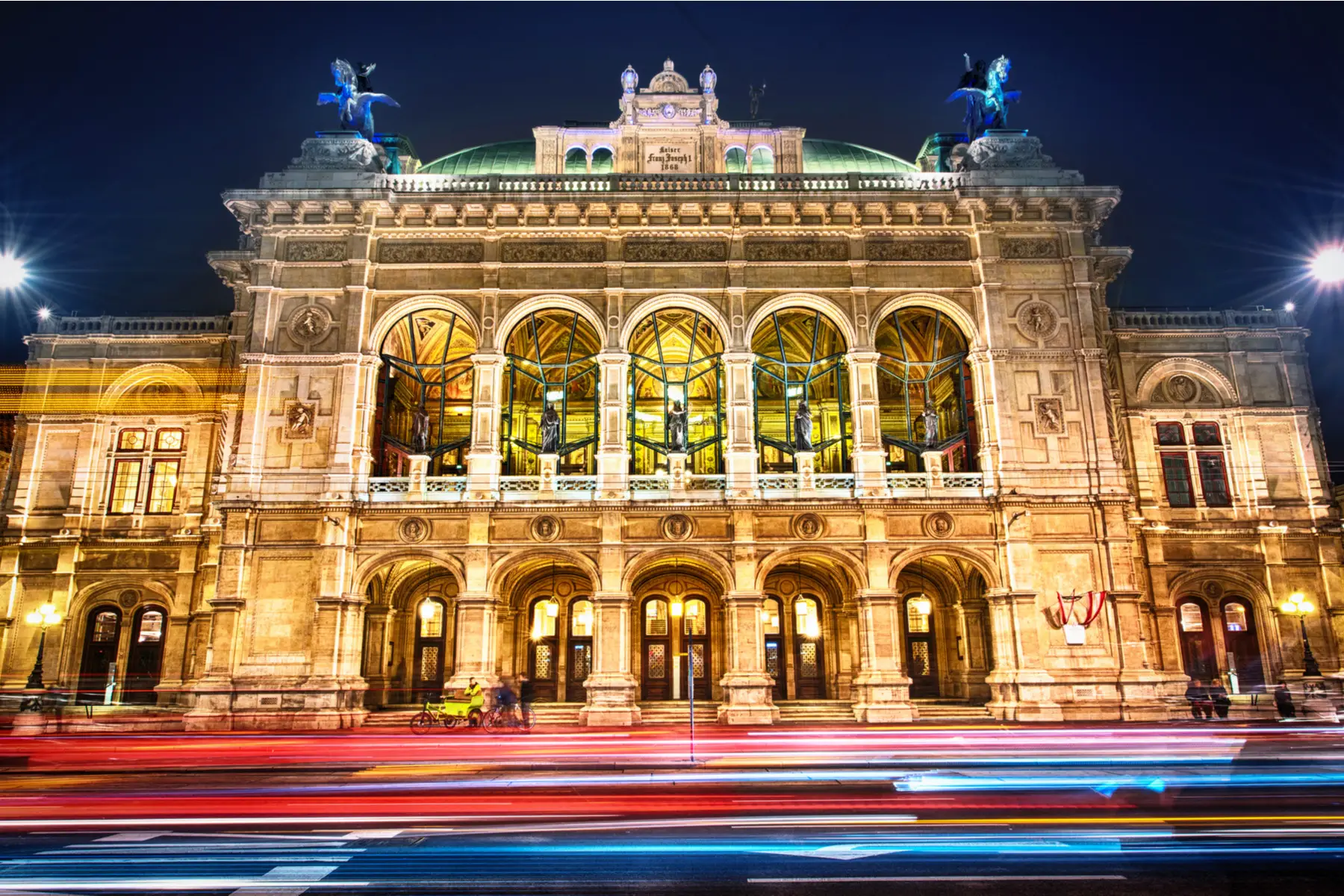
However, if you’re planning a night out at Vienna’s famous State Opera, prices range from €4.50 for a standing-room place to €295 for a seat with a desirable view. Prices also vary depending on the performance and when you book.
How much does it cost to eat out in Austria?
The average spending per capita on hospitality and restaurants is expected to reach €215 per month in Austria in 2025.
Generally speaking, restaurants in Austria aren’t very cheap. Furthermore, the cost of eating out has risen sharply with inflation since 2022. That said, a meal at an inexpensive restaurant can set you back around €15, while a three-course feast at a mid-range restaurant can run between €50 and €100. These numbers vary, of course, depending on whether you are in a major city or a smaller town.

Of course, if you want to delve into some hearty Austrian cuisine, you might be tempted to whip up some delicious dishes in the comfort of your own kitchen and save some money. And if you need some inspiration, these Austrian foods with recipes will make your mouth water.
Sports
Average rates for joining a gym in Austria vary depending on the size and amenities. On the whole, though, you can expect to pay between €25 and €60 per month.
Cost of Austrian education and childcare
Childcare
Although preschool, which starts at age five, is mandatory and free in Austria, childcare and early education costs before this are the responsibility of the parents.
Various day-care options are available, although costs can vary. Fortunately, parents can apply for a childcare allowance to offset some of the costs.
Some families also choose to employ nannies or to convince grandparents to watch over their children. Others, meanwhile, may seek an international au pair who may care for and teach their children a new language, in exchange for room and board, and a minimum monthly allowance of €551.10 based on an 18-hour week.
Children’s education
Public education costs in Austria are very reasonable. In fact, public schools are free all the way through to secondary school. While most free schools teach in German, public German-English bilingual schools are also available. However, spots are very limited. As a result, many expats choose to send their children to international schools which are, on the whole, fairly pricey – generally costing thousands of euros per year.

To explore education options, read our article on the education system in Austria.
University tuition fees
Pubic university education is also more affordable than in many other European countries – €363.36 per semester for local, EU, and EEA students and €726.72 per semester for third-country nationals. This is good news for prospective students, as Austria’s public universities are among some of the best in the world. You may, however, require a high level of German.
Meanwhile, there are also several private universities in Vienna, and these have no restrictions on their fees.
How do Austria’s prices compare to the rest of the world?
Considering that the quality of life in Austria is very high, with excellent scores in global rankings such as the Organisation for Economic Co-operation and Development (OECD) Better Life Index, it’s unsurprising that the cost of living is also high. On the whole, price levels for household goods are higher than the EU average.
The cost of living in Vienna
Vienna, Austria’s capital, is quite an expensive place to live. Although rent controls mean that housing costs are less of a burden, the city is still 24th out of 226 cities on Mercer’s Cost of Living ranking 2024. Indeed, it is one of Europe’s most expensive cities to live in.
Compared to other capital cities, Vienna’s cost of living is:
- 54% lower than New York
- 35% lower than London
- 2% lower than Berlin
- 67% higher than Bucharest
- 78% higher than Ankara
- 199% higher than Delhi
The cost of living in Graz
The second-largest city in Austria is Graz, with a population of around 300,000. It’s known for its universities. Life here is slightly cheaper than in Vienna.
Compared to other cities, Graz’s cost of living is:
- 59% lower than New York
- 42% lower than London
- 12% lower than Berlin
- 50% higher than Bucharest
- 61% higher than Ankara
- 169% higher than Delhi
The cost of living in Linz
Linz, Austria’s third-largest city, is situated on the Danube River. Its cost of living is comparable with Graz:
- 59% lower than New York
- 41% lower than London
- 11% lower than Berlin
- 51% higher than Bucharest
- 62% higher than Ankara
- 170% higher than Delhi
The cost of living in Salzburg
The fourth-largest city in Austria is Salzburg, which is known for its history. Despite its size, it’s one of the most expensive cities to live in.
Compared to other cities, the cost of living in Salzburg is:
- 51% lower than New York
- 31% lower than London
- 5% higher than Berlin
- 76% higher than Bucharest
- 90% higher than Ankara
- 218% higher than Delhi
Financial support for the cost of living in Austria
Aside from subsidized housing and childcare allowance, there are plenty of ways to get assistance with your living costs in Austria. For example, those struggling to pay tuition can apply for a study allowance, while parents of multiple children can apply for a family allowance.
For more information on the different types of benefits available, read our article on social security in Austria.
Tips on how to save money in Austria
Although the cost of living is high in Austria, there are some ways to save money. For example:
- Shop at local markets – the prices at farmers’ markets (Bauernmärkten) are comparable to supermarkets, but you can sometimes find lower prices in small markets outside the city center.
- Use weekly flyers and meal planning – Austrian supermarkets offer regular promotions. Keep an eye on weekly ads (Aktionen) online or in-store and plan meals based on discounts. Websites like Aktionsfinder can help you find and compare options.
- Dine out strategically – Vienna sometimes has a ‘restaurant week,’ where top restaurants offer a set menu at a reduced price for a week.
- Make the most of public transport and cycling – Austria has an excellent public transport system. Consider a Klimaticket for unlimited travel on public transport nationwide at a discounted yearly rate. For shorter distances, cycling is cost-effective, and cities like Vienna and Graz have bike-friendly infrastructure.
- Shop at second-hand stores – Find affordable clothing, furniture, and other household items at second-hand shops like Caritas Shops, Humana, or Willhaben (an online marketplace).
- Save on energy costs – Insulate your home and use energy-efficient appliances to reduce heating and electricity bills.
- Review your contracts – Periodically review and compare internet, phone, and insurance plans to find better deals. Websites like Durchblicker make it easy to compare providers for utilities, loans, and insurance.
Useful resources
- E-Control – Information and comparison tools for energy contracts
- Caritas – List of foodbanks in Vienna and tools for finding assistance with the cost of living in Austria and more
